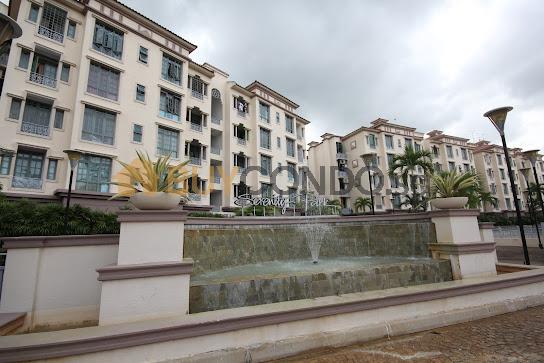Common Tenancy Disputes in Singapore

Tenancy disputes between landlords and tenants are a common occurrence in Singapore, often arising from various issues that can strain the landlord-tenant relationship. These disputes can escalate and result in legal actions being taken by either party. Some of the most common disputes in Singapore include:
- Failure to pay rent: This occurs when tenants do not fulfill their financial obligations by not paying the agreed-upon rent on time.
- Damages caused to premises: Tenants may cause damage to the property either intentionally or unintentionally, leading to disputes over responsibility for repair costs.
- Refusal to leave after lease termination: Some tenants may refuse to vacate the premises even after their lease has ended, leading to disputes over possession.
- Subletting of premises to a third party: If tenants sublet the premises without the landlord’s consent, it can create disputes regarding unauthorized occupants and potential lease violations.
- Withholding deposit by landlords: Landlords withholding the tenant’s deposit without valid reasons can lead to disputes over the return of the deposit.
These disputes often require legal intervention and can result in financial losses, stress, and strain on both parties involved. It is important for landlords and tenants to be aware of their rights and responsibilities and to take proactive steps to prevent these disputes from escalating.
“Tenancy disputes often require legal intervention and can result in financial losses, stress, and strain on both parties involved.”
To effectively handle these disputes, clear communication and documentation are crucial. Landlords should ensure that they have a comprehensive tenancy agreement in place that outlines the rights and responsibilities of both parties. It is also important for landlords and tenants to maintain open lines of communication and address any issues or concerns promptly. If a dispute does arise, seeking legal advice can help guide landlords and tenants through the resolution process.
By understanding the common tenancy disputes in Singapore and taking proactive measures to address them, landlords and tenants can mitigate the risk of disputes and maintain a harmonious landlord-tenant relationship.
The Tenancy Agreement
The tenancy agreement is a crucial document that outlines the terms and responsibilities of both the landlord and tenant. It serves as a legally binding contract that establishes the rights and obligations of each party throughout the tenancy period.
Within the tenancy agreement, various terms are typically included to ensure a smooth and mutually beneficial relationship between the landlord and tenant. These terms may cover aspects such as:
- The duration of the tenancy
- The amount and frequency of rent payments
- The responsibilities of the landlord, such as property maintenance and repairs
- The tenant’s obligations, including keeping the property clean and not causing damage
- The rules regarding subletting and pets
- The process for terminating the tenancy
By clearly specifying these terms within the tenancy agreement, both parties can have a clear understanding of their rights and responsibilities, which helps prevent disputes and misunderstandings from arising. It is important for both landlords and tenants to carefully review and understand the terms of the agreement before signing it.
Ending a Tenancy Early
When situations arise that necessitate ending a tenancy before the agreed term, both landlords and tenants must follow the appropriate procedures to ensure a smooth transition. The first step is to provide the appropriate notice to quit the tenancy, which varies depending on the duration of the tenancy. Typically, the notice period can be inferred from the frequency of rent payments. For example, if rent is paid on a monthly basis, a one-month notice period is usually required. However, it is crucial for both parties to review the tenancy agreement to determine the specific notice requirements.
If a tenant wishes to terminate the tenancy early, they must seek the landlord’s consent and may be required to provide monetary compensation. This compensation is often referred to as a “break lease fee” and is intended to cover the costs associated with finding a new tenant. The amount of the fee is typically outlined in the tenancy agreement and should be discussed between the landlord and tenant before a decision is made.
“The notice period for ending a tenancy early should always be in accordance with the tenancy agreement. It is important for both landlords and tenants to communicate effectively and reach a mutual agreement to avoid any disputes,” advises John Tan, a property lawyer in Singapore.
Once the notice period has passed, both parties should conduct a thorough inspection of the property to assess its condition and settle any outstanding financial matters, such as the return of the security deposit. It is crucial for the landlord to provide a detailed account of any deductions from the security deposit and for the tenant to inspect the property to ensure that it is left in the same condition as when they first moved in.
Key Takeaways:
- Ending a tenancy early requires the appropriate notice to quit the tenancy, which should be in accordance with the tenancy agreement.
- Tenants wishing to terminate the tenancy early may need to obtain the landlord’s consent and pay a break lease fee.
- A thorough inspection of the property should be conducted by both parties after the notice period has passed to settle any outstanding financial matters.
Evicting Tenants
When tenants breach the terms of a tenancy agreement, landlords may need to evict them to regain possession of the premises. One common method of eviction is through forfeiture, which allows the landlord to repossess the property either through peaceful entry or by applying to the court. However, specific legal proceedings must be followed to ensure a lawful eviction.
The eviction process begins with the inclusion of a right of re-entry clause in the tenancy agreement. If a tenant breaches the agreement – for example, by failing to pay rent – the landlord must serve a notice specifying the breach and the desired remedy. The tenant then has the right to apply to the court for relief against forfeiture, which may result in legal proceedings to determine the outcome.
In order to legally re-enter the premises and regain possession, landlords may need to go through further legal proceedings. These proceedings involve applying to the court for a possession order, which grants the landlord the right to evict the tenant. It is important for landlords to follow the necessary steps and seek legal advice to ensure a proper eviction process.
“Evicting tenants through forfeiture requires careful adherence to legal procedures to avoid potential complications or disputes.”
| Stage | Process |
|---|---|
| 1. | Include a right of re-entry clause in the tenancy agreement. |
| 2. | Serve a notice specifying the breach and desired remedy to the tenant. |
| 3. | Tenant has the right to apply to the court for relief against forfeiture. |
| 4. | Landlord applies to the court for a possession order. |
| 5. | Court grants the possession order, allowing the landlord to evict the tenant. |
The eviction process can be complex and time-consuming. It is essential for landlords to understand their legal rights and obligations, as well as seek professional legal advice when necessary. By following the proper legal procedures, landlords can ensure a smooth eviction process and regain possession of their property.
Collecting Unpaid Rent
In the unfortunate event that a tenant fails to pay rent, landlords have legal options available to them for collecting unpaid rent. One such option is the right to distress, which allows landlords to seize and sell the tenant’s goods in order to recover the outstanding rent.
To exercise the right to distress, landlords must first obtain a writ of distress, which specifies the amount of unpaid rent. Once the writ of distress is obtained, the landlord can send a notice of seizure of goods to the tenant, stating their intention to sell the seized goods to offset the unpaid rent. The tenant then has five days to respond or pay the outstanding amount.
If the tenant fails to respond or pay within the specified time, the landlord can proceed with the sale of the seized goods. However, it is important to note that tenants have the right to apply to the court for a restraining order against the sale of their goods.
| Steps to Collect Unpaid Rent |
|---|
| 1. Obtain a writ of distress |
| 2. Send a notice of seizure of goods to the tenant |
| 3. Tenant has five days to respond or pay the outstanding amount |
| 4. If no response or payment, proceed with the sale of the seized goods |
Landlords should act promptly when it comes to collecting unpaid rent and not delay in exercising their right to distress. By following the proper legal procedures and seeking professional advice if needed, landlords can effectively recover the unpaid rent and protect their financial interests.
Legal Recourse for Landlords in Tenancy Disputes
When facing disputes with difficult tenants, landlords in Singapore have legal recourse to protect their rights and resolve the issues. Understanding the options available can help landlords navigate tenancy disputes effectively and find resolutions. Some of the common legal recourses for landlords in tenancy disputes include:
- Breach of Contract: If a tenant fails to fulfill their obligations as stated in the tenancy agreement, such as paying rent or causing damage to the property, the landlord can sue them for breach of contract. By seeking legal action, landlords can seek damages for any losses incurred.
- Recovery of Premises: Landlords can apply to the court to recover possession of the premises if the tenant fails to pay rent, causes damage to the property, or sublets without consent. This legal recourse allows landlords to regain control of their property.
- Exercise Right to Distress: In the event of unpaid rent, landlords can exercise their right to distress. This allows them to seize goods owned by the tenant to sell in order to recover the unpaid rent. However, landlords must follow the proper legal procedures and serve the necessary notices before proceeding with the sale of seized goods.
It is important for landlords to gather evidence, review the tenancy agreement, and seek legal advice to navigate the legal process effectively. By understanding their legal rights and options, landlords can protect their interests and find appropriate solutions to tenancy disputes.

Table: Legal Recourse for Landlords in Tenancy Disputes
| Recourse Options | Description |
|---|---|
| Breach of Contract | If a tenant fails to fulfill their obligations stated in the tenancy agreement, the landlord can sue them for breach of contract and seek damages for any losses incurred. |
| Recovery of Premises | Landlords can apply to the court to regain possession of the premises if the tenant fails to pay rent, causes damage to the property, or sublets without consent. |
| Exercise Right to Distress | Landlords can exercise their right to distress to seize goods owned by the tenant and sell them to recover unpaid rent. Proper legal procedures and notices must be followed. |
By utilizing these legal recourses, landlords in Singapore can address tenancy disputes effectively and ensure their rights are protected. Seeking professional advice and assistance when necessary can help landlords navigate the legal process with confidence.
Importance of Tenancy Agreements in Resolving Disputes

Tenancy agreements play a crucial role in resolving disputes between landlords and tenants. By clearly outlining the rights and responsibilities of both parties, the agreement serves as a reference point for addressing any issues that may arise during the tenancy. Understanding the terms within the tenancy agreement can help prevent disputes and provide a foundation for resolving any conflicts that do occur. It is important for landlords and tenants to carefully review and understand the terms of the agreement before entering into a tenancy.
The tenancy agreement serves as a legal document that specifies the obligations and expectations of both the landlord and the tenant. It covers important details such as the duration of the tenancy, rental payment terms, maintenance responsibilities, and any specific rules or restrictions. By having a well-drafted and comprehensive agreement in place, both parties have a clear understanding of their rights and obligations. This can help minimize misunderstandings and disagreements, and provide a basis for resolving any disputes that may arise.
In the event of a dispute, the tenancy agreement can serve as evidence to support the claims of either party. It can help establish the agreed-upon terms and determine whether any breaches or violations have occurred. The terms within the agreement can be used to guide negotiations or discussions to reach a resolution. If necessary, the agreement can also be used as a basis for legal recourse, such as filing a breach of contract claim or seeking remedies in court. Overall, the tenancy agreement plays a crucial role in ensuring a fair and smooth rental experience for both landlords and tenants.
Key Terms in a Tenancy Agreement
| Term | Description |
|---|---|
| Term of tenancy | Specifies the duration of the tenancy, whether it is for a fixed term or on a month-to-month basis. |
| Rental payment | Outlines the amount and frequency of rent payments, as well as the acceptable methods of payment. |
| Security deposit | Defines the amount of the security deposit, its purpose, and the conditions for its refund or deduction. |
| Maintenance responsibilities | States the responsibilities of the landlord and the tenant for maintaining the property and making repairs. |
| Termination terms | Specifies the notice period required for terminating the tenancy, as well as any penalties or fees for early termination. |
Benefits of a Well-Drafted Tenancy Agreement
- Provides clarity and prevents misunderstandings
- Establishes legally binding obligations
- Serves as evidence in case of disputes
- Protects the rights and interests of both parties
- Provides a framework for resolving conflicts
Conclusion
In conclusion, demanding tenants can present challenges for landlords, leading them to consider selling their property. However, before making such a decision, landlords should explore various ways to handle demanding tenants and protect their rights. By understanding the types of tenancies in Singapore, the importance of the tenancy agreement, and the legal recourse available, landlords can navigate tenancy disputes more effectively.
One way to handle demanding tenants is by properly ending a tenancy. Landlords and tenants should review their tenancy agreement to determine the specific notice requirements for ending the tenancy early. By providing appropriate notice and, if necessary, obtaining the tenant’s consent and/or requiring monetary compensation, landlords can ensure a smooth transition.
In cases where eviction is necessary, landlords can pursue legal proceedings through forfeiture to regain possession of the premises. By including the right of re-entry in the tenancy agreement and serving a notice of breach and desired remedy, landlords can initiate the eviction process. It’s important to note that tenants have the right to apply to the court for relief against forfeiture.
Another challenge that landlords may face is collecting unpaid rent. Landlords can exercise their right to distress under the Distress Act by obtaining a writ of distress to claim unpaid rent. By following the proper procedures, including sending a notice of seizure of goods to the tenant, landlords can recover the arrears through the sale of seized goods.
Table: Ways to Handle Demanding Tenants
| Approach | Description |
|---|---|
| Properly ending a tenancy | Review the tenancy agreement for notice requirements and obtain necessary consent or compensation. |
| Evicting tenants through forfeiture | Include the right of re-entry in the tenancy agreement and serve a notice of breach and desired remedy. |
| Collecting unpaid rent | Exercise the right to distress by obtaining a writ of distress and following the necessary procedures to recover unpaid rent. |
By considering these various approaches, landlords can effectively handle demanding tenants and protect their property. It is crucial for landlords to stay informed about their rights and seek legal advice when necessary. By taking proactive measures and having a clear understanding of the legal processes involved, landlords can make informed decisions and find solutions to tenant issues.
Conclusion
Dealing with demanding tenants can be a challenging experience for landlords. The difficulties posed by these tenants may lead to a decision to sell the property. However, it is important for landlords to explore their options and understand their rights before taking such a drastic step.
By terminating the tenancy early, evicting tenants, or collecting unpaid rent, landlords can address the issues caused by demanding tenants effectively. It is crucial for landlords to carefully review the tenancy agreement, seek legal advice, and maintain open communication with the tenants. These proactive steps can help in finding the best solution for the property while protecting the landlord’s rights.
While property sales due to challenging tenants may seem like the only option, it is advised that landlords exhaust all available avenues before making such a drastic decision. Understanding the reasons for selling the property and exploring ways to handle demanding tenants can help landlords make informed choices and find the most suitable resolution.
FAQ
What is a tenancy agreement?
A tenancy agreement is a legal document that transfers the interest in a property from the landlord to the tenant, giving the tenant exclusive possession of the premises for a specific term at a determined rent.
What types of tenancies are there in Singapore?
The types of tenancies in Singapore include leases and licenses. Leases give tenants more rights and the ability to sue for certain issues, while licenses are personal arrangements for short periods of time.
How can a tenant terminate a tenancy early?
To terminate a tenancy early, either the landlord or tenant must provide appropriate notice to quit the tenancy. The length of the notice period is usually inferred from the rent payment frequency and can be found in the tenancy agreement.
How can a landlord evict a tenant?
Landlords can evict tenants who breach the tenancy agreement through forfeiture. This requires a written demand and, if necessary, legal proceedings to regain possession of the premises.
What can landlords do to collect unpaid rent?
Landlords can exercise their right to distress under the Distress Act, which allows them to claim up to 12 months of unpaid rent by seizing and selling the tenant’s goods.
What are some common tenancy disputes in Singapore?
Common tenancy disputes include failure to pay rent, damages caused to the premises, refusal to leave after lease termination, subletting without consent, and withholding of the tenant’s deposit without valid reasons.
What legal recourse do landlords have in tenancy disputes?
Landlords can take legal action through breach of contract claims, applying to the court for possession of the premises, and exercising the right to distress to recover unpaid rent.
How important are tenancy agreements in resolving disputes?
Tenancy agreements are crucial in resolving disputes as they outline the rights and responsibilities of both the landlord and tenant. They serve as a reference point for addressing issues that may arise during the tenancy.













